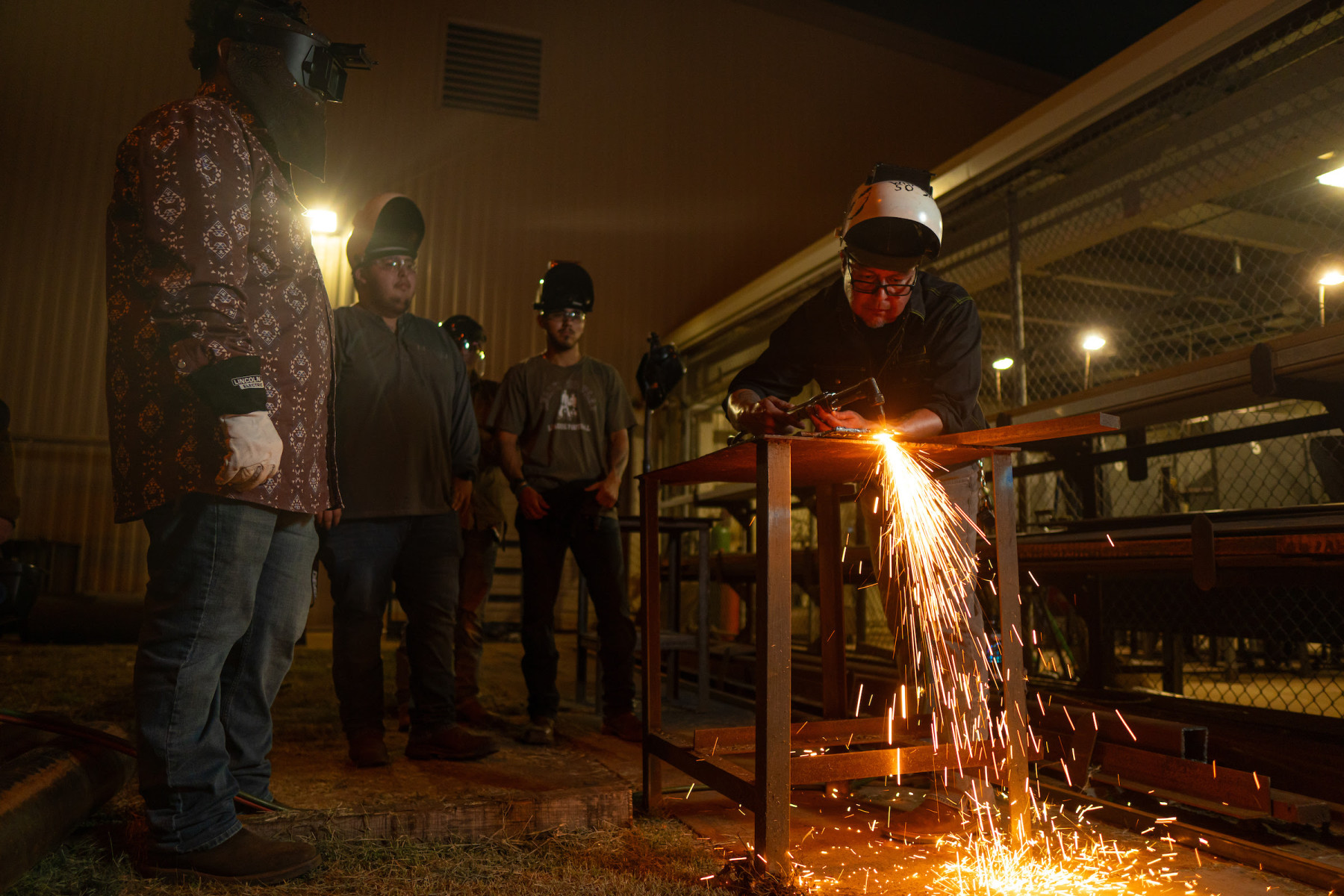- September 26, 2024
Midnight welding sparks new opportunities at STC

South Texas College has introduced “Midnight Madness” for students, but unlike the typical reference to sports, it is enabling welding students to earn their Welding degrees through courses that run late into the night.
As sparks and welding torches light up the night sky at STC’s Technology Campus, college leadership and faculty say there is a concerted effort to help students balance their responsibilities and full-time jobs during the day, while preparing them for late-night shifts, which are standard in the industry.
“These ‘midnight classes’ introduced in the STC Welding Program demonstrate how our dedicated faculty are effectively meeting students’ needs through this innovative approach. These classes are now among the first to reach full capacity,” said Sara Lozano, dean of Business, Public Safety and Technology at STC. “This success highlights the impact of having exceptional faculty committed to student achievement, improving access and opportunity for our community.”
Carlos Obando is among a group of 50 students who have opted for late night classes at STC. Since the start of the semester, Obando said he clocks out of his daytime job, has a quick dinner and then makes his way to the college’s Technology Campus for welding classes that run late into the night, 10:30 p.m. to 1:30 a.m., during the week.
“I work during the day in the maintenance department for a local hotel, so it works better for me to come to class at night,” Obando said. “We need people with welding experience at the place where I work, so I decided I had to step up. I have always liked welding. I’m a fabricator by trade, so it’s something that I have been doing for more than 20 years at home. I’m just grateful for all of the instructors here who have always helped me, especially as I try to better myself through this program at STC.”
Esequiel Munoz, a student who is looking at a career in structural welding or as a pipe welder, said the late-night classes support his day job working for a service company and delivering parts to construction sites from Laredo to Corpus Christi.
“I have responsibilities. I must take care of and provide for people at home, so having the opportunity to come in at night to take these classes has really helped me out,” Munoz said. “The transition to studying and attending classes late has been challenging, but it is preparing me for those 12-hour shifts that are pretty standard in the industry.”
Created in 2023, STC faculty say what initially started as an opportunity for capstone students, those who are in their last semester before graduating, has since been extended to introductory and intermediate students.
“When we were considering these late classes maybe a year and a half ago, we realized that we had students who were working full-time, who had kids and many other major responsibilities. This was the only time they had available to get to class, so now basically, they put their kids to bed and they spend their nights with us working for their degree,” said Welding Program Assistant Chair, Baldemar Garcia. “This is the time that works best for them. They can do their normal 8-to-5 job and they can still come in and do their classes and get ahead. We work around everybody’s schedule because we want to help out in every way possible.”
Students seeking a degree in Welding from STC immediately become immersed in a program at a college that is just one of six accredited testing facilities in Texas certified by the American Welding Society (AWS), making it among only a select few programs that can administer tests for multiple specialized certifications in welding to improve students’ employment chances. STC’s Welding program currently has an 83% job placement rate.
More than 25 welding instructors, who collectively have over 350 years of industry experience, introduce students to the fundamentals of the craft including lay-out, fabrication, blueprint reading, safety and metallurgy while enabling them to earn a total of seven AWS certifications through the program.
“We try to do everything in our power to get them into the field,” Garcia said. “This is just one example of how we are constantly finding innovative ways to help students reach their career goals. Holding late night classes is just our effort to ensure that there is one-on-one interaction between us and our students, and they thrive because of it.”

